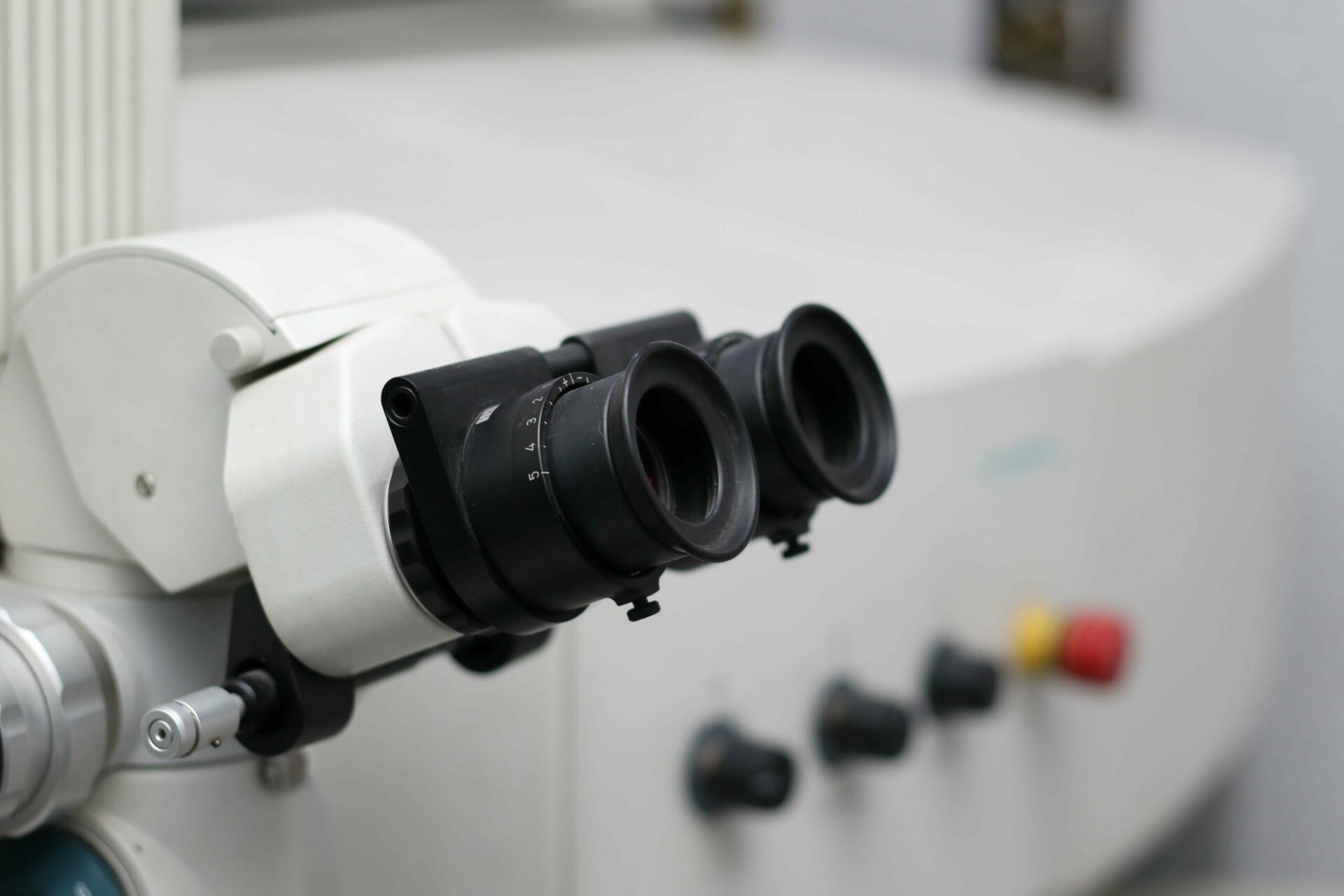In part 1 of our series on optical coatings, we looked at how they were used in Defence and Aerospace. In part 2, we’ll prove how these indispensable elements are the driving force behind groundbreaking advancements in medical technology and transformative enhancements in consumer products.
From revolutionising medical imaging and visual experiences in electronics, optical coatings play a pivotal role in shaping the future of healthcare and consumer goods.
Key Takeaways
- Optical coatings play a vital role in healthcare, enabling precise imaging, diagnostics, and treatment in machines like X-ray systems, CT scanners, and MRI machines.
- Ophthalmic applications benefit from anti-reflective coatings on eyeglasses, contact lenses, and intraocular lenses, enhancing visual clarity and aesthetics.
- Optical coatings are essential in telecommunications for fibre-optic communication systems, enabling efficient light coupling and signal isolation.
- Consumer electronics benefit from optical coatings that improve display quality, protect devices, and enhance camera functionalities.
- Case studies highlight the use of optical coatings in Siemens Healthineers’ MRI scanners, Verizon’s fibre-optic networks, and Apple’s consumer electronics.
Optical Coatings in Healthcare
In the healthcare industry, optical coatings play a pivotal role in enhancing medical devices’ performance, enabling precise imaging, diagnostics, and treatment. From improving imaging modalities to enhancing patient safety, optical coatings are instrumental in driving innovation and advancements in medical technology. Coatings are used in a number of ways within Healthcare such as:
1. Diagnostic Imaging
Machines such as X-ray systems, computed tomography (CT) scanners, and magnetic resonance imaging (MRI) machines.
2. Ophthalmic Applications
Optical coatings have transformed the ophthalmic industry, enhancing the performance of eyeglasses, contact lenses, and intraocular lenses (IOLs). Anti-reflective coatings applied to eyeglasses reduce glare, improve visual clarity, and enhance the aesthetics of the lenses.
3. Endoscopy and Minimally Invasive Surgery
Play a crucial role in endoscopy and minimally invasive surgical procedures, where miniature cameras and imaging systems enable physicians to visualise internal organs and tissues.

4. Biomedical Imaging and Microscopy
Allow researchers to study cellular structures and biological processes at the microscopic level. Coatings applied to microscope objectives and lenses improve light transmission and contrast, enabling higher resolution and more detailed imaging.
5. Personal Protective Equipment (PPE)
Employed for personal protective equipment, such as face shields and goggles, to enhance safety and comfort for healthcare workers. Coatings with anti-fog properties prevent lens fogging, ensuring clear visibility and reducing the risk of exposure during extended use.
Case Study: Siemens Healthineers, a global leader in medical technology, incorporates anti-reflective coatings in their MRI scanners. These coatings minimise signal losses and enhance the clarity of images, enabling more accurate diagnoses and improved patient outcomes.
Optical Coatings in Telecommunications
The telecommunications industry heavily relies on optical coatings for fibre-optic communication systems. Coatings are essential in reducing signal losses and maximising data transmission efficiency in fibre-optic networks. Dense wavelength division multiplexing (DWDM) systems utilise optical coatings to separate and combine data streams at different wavelengths, significantly increasing network capacity.

1. Fibre Optic Communications
Fibre optic communication systems, which form the backbone of modern telecommunications networks. Coatings applied to fibre optic connectors and endfaces ensure efficient light coupling and reduce signal losses at the connection points. Anti-reflective coatings prevent signal degradation due to reflections, while protective coatings safeguard fibres against environmental factors and mechanical stresses.
2. Optical Amplifiers & Lasers
Used in semiconductor optical amplifiers and lasers used in telecommunication applications. Coatings in these devices help control the emission and amplification of light, ensuring stable and efficient operation. Anti-reflective coatings on laser facets reduce back reflections and enhance laser efficiency.
3. Optical Switches and Modulators
Coatings in these devices control the interaction of light, allowing for fast and precise signal routing and modulation. Electro-optic and magneto-optic coatings enable rapid and efficient signal manipulation.
4. Free-Space Optical Communication
Essential in free-space optical communication systems, where data is transmitted through the air using lasers. Coatings on transmitter and receiver optics enhance beam collimation and minimise atmospheric interference, ensuring reliable and secure communication.
Case Study: Verizon, a prominent telecommunications company, employs specialised optical coatings in their fibre-optic networks. These coatings optimise signal transmission, allowing high-speed data transfer and reliable communication services for millions of users.
Optical Coatings in Consumer Electronics
In the consumer electronics market, optical coatings help to enhance device performance, user experience, and functionality. These coatings play a vital role in improving display quality, enabling camera functionalities, and protecting electronic devices. They can help to provide;
1. Anti-Reflective (AR) Coatings for Displays
Anti-reflective coatings on camera lenses improve light transmission, resulting in clearer and sharper images. Display technologies, such as LCD and OLED screens, utilise optical coatings to reduce reflections and enhance visual experiences.
2. Durable and Scratch-Resistant Coatings
Optical coatings with scratch-resistant and durable properties protect device screens and camera lenses from scratches, smudges, and dust. These coatings extend the lifespan of devices and maintain the optical integrity of lenses.

3. Camera Lens Coatings
Anti-reflective coatings on camera lenses improve light transmission, reduce lens flare, and enhance image sharpness and contrast. Additionally, hydrophobic and oleophobic coatings repel water, oil, and fingerprints, keeping lenses clean and clear.
3. Virtual and Augmented Reality Devices
Virtual Reality (VR) and Augmented Reality (AR) devices rely heavily on optical coatings to deliver immersive and realistic experiences to users. AR devices utilise coatings to reduce reflections and maximise light throughput, enabling users to overlay digital content in the real world seamlessly.
4. Optical Filters for Consumer Electronics
Polarising coatings in liquid crystal displays (LCDs) control light polarisation, enabling users to view content clearly from specific angles. Colour filters in displays enhance colour accuracy and vibrancy, contributing to an enjoyable visual experience.
Case Study: Apple, a leading consumer electronics company, uses advanced optical coatings on their iPhone camera lenses and displays. These coatings enhance image quality and display brightness, ensuring a superior user experience for millions of customers worldwide.
Quality Optical Coatings
Optical coatings are indispensable in specific industries, enabling enhanced performance, safety, and innovation. From aerospace to defence, healthcare, telecommunications, and consumer electronics, these coatings play a crucial role in optimising optical systems and achieving industry-specific objectives.
As technology continues to advance, the demand for cutting-edge optical coatings will only grow, propelling various sectors toward a future of endless possibilities and advancements.
By embracing the significance of optical coatings and harnessing their potential, industries can continue to drive progress and innovation in their respective fields.
If you are in need of quality optical coatings from Anti-reflective to Infrared, contact our team today for more information or email sales@uqgoptics.com.




